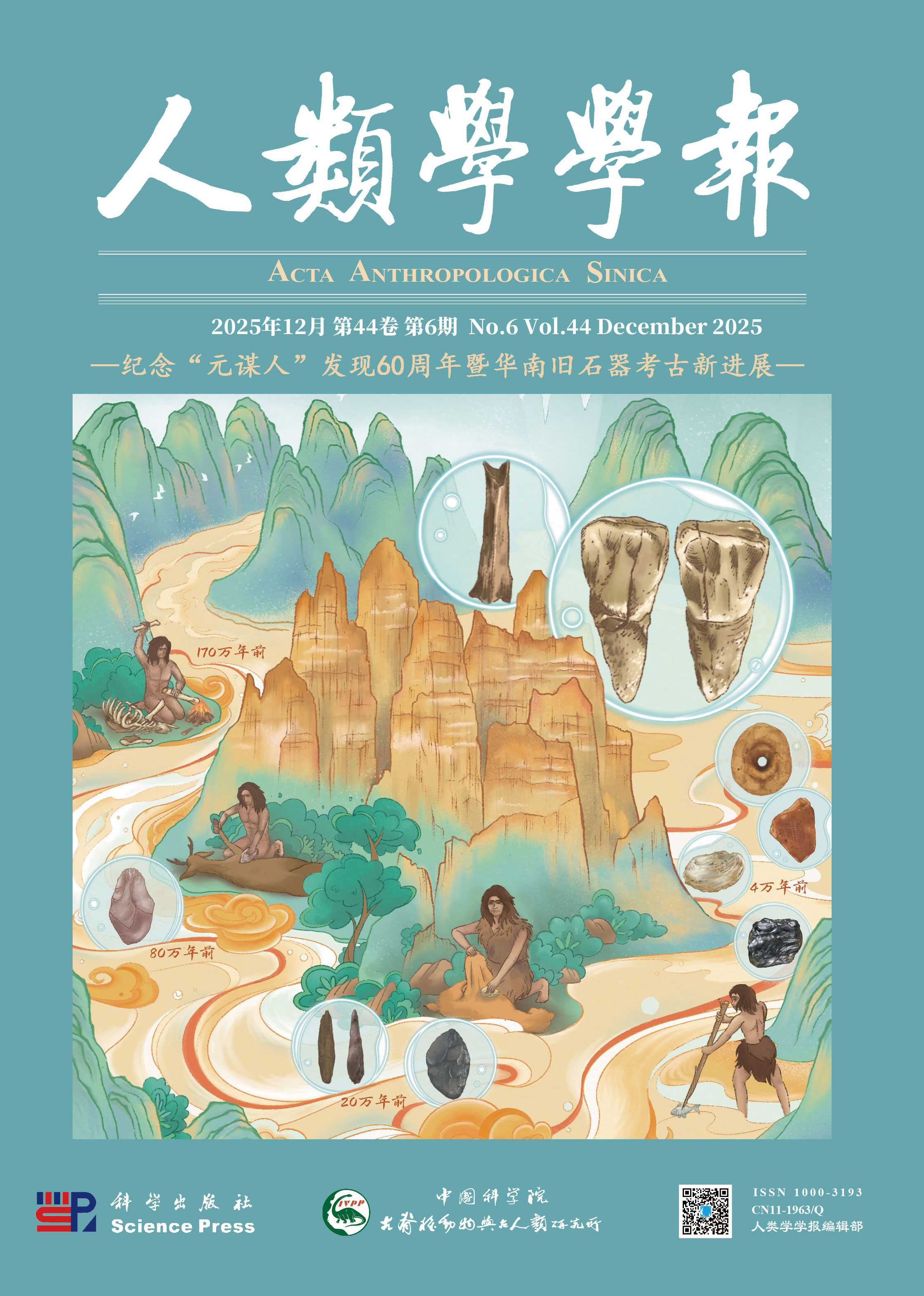Comparison of Homo sapiens erectus from Nanjing with those from Zhoukoudian and Sangiran in facial morphology
ZHANG Yinyun, LIU Wu
2005, 24(03):
171-177.
 Asbtract
(
444 )
Asbtract
(
444 )
 PDF (798KB)
(
158
)
Related Articles |
Metrics
PDF (798KB)
(
158
)
Related Articles |
Metrics
Nanjing, the Homo sapiens erectus fossil site, is a geographical intermediary between Zhoukoudian, North China, and Sangiran, Indonesia. Fortunately, the Nanjing 1 cranium preserves facial skeleton, which is comparable with those from Zhoukoudian and Sangiran. To examine the geographic variation of Homo sapiens erectus in China, a comparison of Nanjing 1 with Sangiran 17 and Zhoukoudian 11 in facial morphology is made in this paper. The comparison shows that Nanjing 1 resembles Zhoukoudian 11 in many features, including smaller face, flat infraorbital region, flatter upper face, less massive supraorbital torus, mesoconchy orbit, obtuse angle shape of inferolateral margin of the orbit, clear expression of the malar incisure, and high base of zygomatic process of maxilla. However, Nanjing 1 resembles Sangiran 17 in other features. These features include broad face, the supraorbital torus projecting more medially than laterally in superion view, relatively horizontal orientation of the inferior border of the supraorbital torus, distinct internasal keeling, tented shape of saddle in transverse section, eversion of the low border of the zygomatic, a more laterally situated malar tubercle, and a higher zygomatic bone. Nanjing 1, as Hexian does, is a morphological intermediary between Zhoukoudian and Sagiran, and suggests a geographic variation between North and South Homo sapiens erectus in China. The morphology of Nanjing 1 supportsthe contention that "There may have been a gradient in morphology running from the north to the south of East Asia"( Wolpoff, 1999) .









